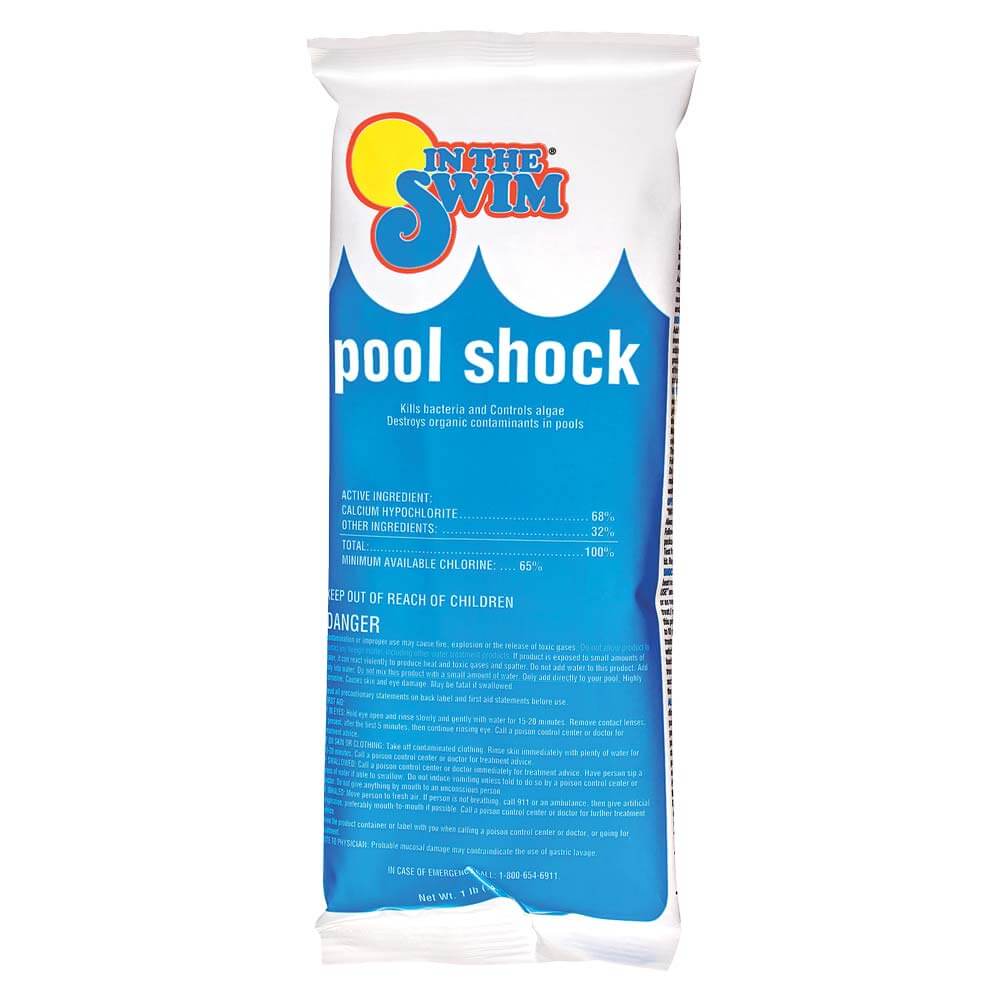FREE Standard Shipping On All Orders $100 or More!*

Should I or Should I Not Shock My Pool During Winter?
As winter’s chill settles in, the dynamics of pool maintenance undergo a shift, prompting questions about whether the practice of pool shocking remains relevant during the colder months. Some say there is no need to do a full shocking of the pool during the off-season winter months. Others insist on doing the opposite, boosting chlorine levels even though the pool is not being used.
Let’s explore further by delving into the nuances of pool shocking in the winter, exploring reasons behind its consideration and the potential benefits for maintaining water quality.
Open & Operational Pools
You may want to shock the pool during winter if:
- The water temperature is above 60 degrees Fahrenheit.
- The pool is not covered with a winter cover or safety cover that blocks the sun.
- Your level of combined chlorine (chloramines) is above 0.3 ppm.
Closed & Covered Pools
You may want to shock the pool during winter if:
- You see visible algae or very poor water clarity.
- You did not use enough winter algaecide during pool closing.
- The pool has a poorly fitted pool cover, or if sun and debris are getting through.
How to Shock a Pool During Winter
If your pool is open and operational, shock the pool using your normal procedure. Keep the pump running for several hours after shocking to distribute the chlorine.

If you've closed and covered your pool, pull back one side of the pool cover to add pre-dissolved pool shock. Then use your pool brush vigorously, to create circulating currents. This circulation is extremely important in distributing the shock throughout the pool and preventing damage to pool surfaces. Without the help of a pool pump or a brush to distribute the shock, damage can be caused by concentrated chlorine settling in one area of the pool, such as the steps or floor. For this reason, non-chlorine shock is a popular choice for pool owners during the cooler months; it won't stain or damage vinyl and plaster. However, it won't kill visible algae as well as chlorine shock would.
You do not need as much pool shock during winter as you normally would to achieve the same effect. The National Library of Medicine found that at normal summer water temperatures, the efficacy of chlorine was 2-3 times less than for water temperatures around 50 degrees Fahrenheit. You won't notice this in your chlorine test since temperature doesn't affect the chlorine residual (how much chlorine is free and available). Only the strength or power of the hypochlorous acid (HOCL) increases. That said, don't use 2-3 times less pool shock than your normal dosage. However, you can definitely decrease the typical summertime amount by a small amount.
Your pool water pH level is important. You should do a pH test before shocking, and add a pH decreaser if the reading is above 7.5. Chlorine pool shock has more efficient disinfecting properties in water with a lower pH reading, and it loses effectiveness as the pH scale increases. Bear in mind that if the pH gets too low, the water becomes acidic and will damage your pool surfaces. It's recommended to shock the pool when the pH level is at 7.2-7.4.
For uncovered pools, you may also want to check your level of cyanuric acid, or CYA, before shocking a winter pool. Indeed, during winter, the sun's strength diminishes significantly, eliminating the need for a 50 ppm residual of stabilizer or conditioner. However, aim to have at least 20 ppm of CYA in the water, as measured by your local pool store, or by using your own cyanuric acid test. High CYA content in the water can significantly decrease the effectiveness of chlorine, so be careful not to let the concentration get too high.